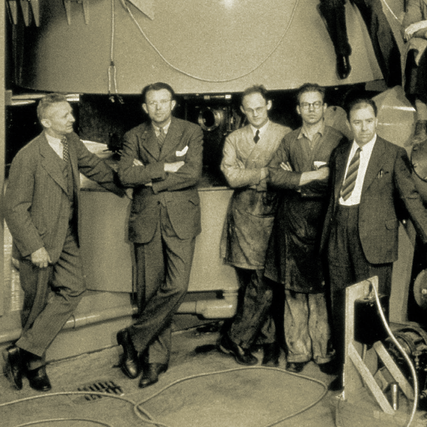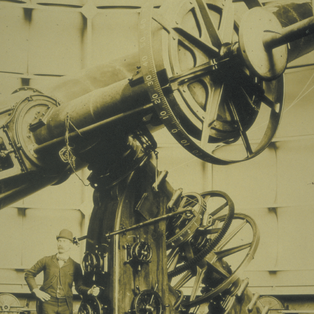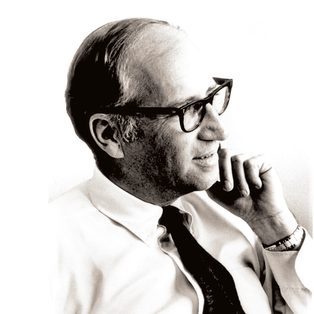Brilliant Discoveries Open New Frontiers
Developing a first-rank faculty has always been critical to establishing the university’s preeminence, and few deans had a more profound impact on Berkeley’s future than Gilbert N. Lewis. Lewis came from the Massachusetts Institute of Technology to head the College of Chemistry in 1912, and he soon assembled the faculty who would create a revolution in scientific research.

The period between the World Wars was the golden age of physical chemistry, and UC Berkeley made enormous contributions to the field.
Plutonium-238 and -239, as well as nine of the 11 transuranium elements on the periodic table, were discovered by Nobelist Glenn Seaborg Ph.D. ’37 and other colleagues. The elements named Berkelium, Californium, and Lawrencium all reflect their UC Berkeley origins. In 1997, Seaborg became the only living person to an element named after themselves: seaborgium.
UC Berkeley physics also rose in prominence in the mid-20th century. When Ernest O. Lawrence came from Yale in 1928, he already had the reputation of a wunderkind. The notion that he would consider leaving Yale for the University of California’s offer of an associate professorship — at a salary reduction — struck his colleagues as ludicrous. But for Lawrence, the Berkeley campus meant freedom to move as fast as his ideas.
Less than two years after his arrival, Lawrence, using about $25 worth of copper, sealing wax, and other crude materials, began work on what he later named a “cyclotron,” a device designed to disintegrate atomic nuclei to gain fundamental information about atomic structure.
Lawrence’s 1939 Nobel Prize in Physics was the first to be awarded to a faculty member at a public university and the first in a shower of international recognition for UC Berkeley faculty. Since 1946, 16 more professors became Nobel laureates: seven in chemistry, eight in physics, and the last in physiology and medicine. These awards reflected that some of the most dramatic scientific discoveries in history have taken place here — from the isolation of a virus and the understanding of photosynthesis to documenting the expansion of the universe.



